Categories
Latest Posts

Skai Director of Sales joins Podean as Director of Retail Media Partnerships
September 12, 2023

Podean Turkey launches & unveils ecommerce research
August 5, 2022
Your handy guide to all the Amazon acronyms and terminology is finally here.
We regularly get asked by clients and partners what different terms and acronyms mean. So we’ve created the useful guide to all the terms and acronyms used in the world of Amazon.
We are sure we have missed some out, so if you have some you believe should be on the list just let us know and we will be sure to add them in.
Here we go…..
# – PK – When a listing on Amazon comes with multiples of an individual product. For example, a 3PK of toothpaste would come with three tubes in a single purchase. This is often referred to as a multi-pack as well
1P = First Party – A wholesale relationship with Amazon where it buys your products and sells to Amazon customers
3P = Third Party – Using Amazon’s marketplace to sell to consumers shopping on its platform
3P Seller = Third-party Seller – companies that are selling your products but are not associated with your brand
A+ – this is additional information and allows for extra imagery to be added to products on Vendor Central. This is when a listing has a ‘From the manufacturer’ section above the product description
ACOS – Average cost of sales – Used related to Amazon sponsored product ads, and is a metric of how well your ads are performing relative to their cost.
Amazon Attribution- This beta measurement solution provides brands that sell on Amazon with sales impact analysis across media channels off Amazon. With on-demand reporting, advertisers and brands can uncover insights to optimize their media campaigns and grow product sales.
Amazon Brand Registry- This Amazon service is designed to help build and protect a vendor’s brand & create a better experience for their consumers. It does this by providing powerful search tools that let you find & report suspected violations (counterfeit products) as well as using brand information to proactively remove suspected infringing or inaccurate content.
Amazon Cash- This service (launched in 2017) allows customers to deposit cash, without a fee, to a digital account by showing a bar code at a partner brick-and-mortar retailer.
Amazon Go- This is Amazon’s new kind of brick-and-mortar store, featuring the world’s most advanced shopping technology. No lines, no checkout – just grab and go! Only in the US so far- with expansion plans.
Amazon Live- a live streaming service that allows sellers to “promote discovery” of their products by hosting live streams for customers on Amazon.
Amazon Pay- This service lets you use the payment methods already associated with your Amazon account to make payments for goods, services, and donations on third-party websites, in apps, and using Alexa.
Amazon Premium Beauty- Makes it simple to find all of your preferred beauty products in one location. Their carefully selected list of premium beauty products includes the latest in skincare, fragrances, nails, hair products, makeup, and much more.
AMC – Amazon Marketing Cloud– This service is a secure, privacy-safe, and dedicated cloud-based environment in which advertisers can easily perform analytics across multiple, pseudonymized data sets to generate aggregated reports.
AMG = Amazon Media Group – this is the overarching section of Amazon, which oversees all advertising options
AMS = Amazon Marketing Services – this is Amazon’s PPC advertising platform for Vendors, allowing the creation of Sponsored Products, Headline Search Ads, Product Display Ads and Lock Screen Ads (the US Only) (Now known as ‘Advertising console’ within ‘Amazon Advertising’)
APS – Auction Preferred Stock – Auction market preferred stock typically reset their dividends every 7, 14, 28, or 35 days and are generally structured as preferred shares (issued by closed-end funds).
ARA – Amazon Retail Analytics (ARA) Premium is an add-on suite of additional reports which Vendors have access to through Vendor Central
ASIN – Amazon standard information number – Amazon’s internal tracking identifier for each listing in their catalogue. It’s similar to a UPC but is exclusive to Amazon.
ASP – Average Selling Price – Refers to the average price that a seller on Amazon sellers sells their items for. Calculated by taking the total sales for a time period divided by the number of items for the time period.
ATOP – At Time of posting – You are likely to see this in Amazon-related Facebook groups. This most often refers to the pricing of an item at the time the post was made.
AWS- Amazon Web Services- This is a secured cloud services platform with a large bundle of cloud-based services that provide; servers, storage, networking, remote computing, email, mobile development, and security. And is currently used for the Rugby 6 Nations and NFL to predict a penalty or conversion kick success probability.
AZ – Amazon
BB – Buy Box – Refers to the seller associated with the add to cart button on any Amazon product detail page.
BISS – This is a category on Amazon that is restricted to most sellers. It is the “Business, Industrial & Scientific Supplies”
BL – Big Lots – Discount store frequented by many FBA sellers
BM – Brick & Mortar Store – Used in reference to shopping at a store that has a physical location
BTS – Back To School – a season where Amazon sellers often buy products from retail stores and mark them up on Amazon
BOGO – Buy One Get One – This is used for shopping deals. Often used in sale ads. For example: “Triscuits are BOGO free this week at Target”, meaning you buy one box you get one free. Sometimes used BOGO 50% meaning: Buy One Get One 50% Off.
BOLO – Be on the lookout. Typically this is used for an item that is profitable that you might be able to find in stores near you.
Browse Nodes – a hierarchical structure used for categorising products at different levels to be more specific, allowing for products to be easier to find
Bundle – When a listing on Amazon combines multiple DIFFERENT products, to create ONE new product listing
BSR – Best Seller Rank – often used interchangeably with sales rank, gives an idea of how well an item is selling compared to others.
Category – The placement within Amazon to categorize products. There are main categories as well as sub-categories. Some categories are restricted to new sellers and others are open to all seller
CCC – camelcamelcamel.com – this is a website that tracks the price and sales rank history of products on Amazon.
CDN$ – Canadian Dollar – this comes into play if you are selling on the Amazon.ca platform.
COGs – Cost of Goods Sold
Contra-COGS – all Backends (e.g. MDF, VINE, ARA Premium, etc.), (does not include AMG
CPC – Cost-per-click – digital marketing metric that measures the amount of money paid for each click in a pay-per-click (PPC) marketing campaign.
CPM – Cost per thousand impressions – refers to the cost of displaying an advertisement one thousand times (known as “impressions”).
CPP – Cost per purchase
CRaP– products that Amazon (through all its algorithmic genius) Can’t Realize any Profit
CTR – Click-through rate – a digital marketing metric that measures the ratio of total impressions to clicks in search and display advertising, email marketing, and other online mediums.
DMP – Data Management Platform – an important part of an organization’s marketing strategy
DPVR – Detail page view rate
DSP = Demand Side Platform (formerly AAP = Amazon Advertising Platform) – this is an advertising platform allowing for advertisers to drive traffic from other websites or mobile apps to Amazon
DS – Drop Shipping – The act of shipping a product directly from a supplier to the end customer.
DTC – Direct-to-Consumer – bypassing traditional practices, such as selling through resellers, and taking control of the consumer experience from the very beginning of the sales cycle by selling directly to their customers.
EAN – European Article Number – 13 digit number system for identifying retail products.
EBC = Enhanced Brand Content – this replaces the product description on listings and allows for extra information and images to be added. This is for products that are on Seller Central and enrolled in the Brand Registry.
EDI – The ability to exchange documents electronically has a wide variety of benefits, which include increased efficiency from automating transactions, reduction of errors from manual data entry, validation of content (via EDI standards and receiving software) to confirm transactions contain all they need to enable proper processing, traceability, reduced costs and faster processing.
EFN = European Fulfilment Network – this is Amazon’s option for selling on other EU marketplaces but fulfilling all orders from fulfilment centres in the home country
eTailing – the selling of retail goods on the Internet. Short for “electronic retailing.”
FBA – Fulfillment by Amazon – this is Amazon’s fulfilment option where Sellers send their products to Amazon fulfilment centres and Amazon then takes care of the picking, packing and shipping when a customer places an order
FBM – Fulfilled by Merchant – Also known as MF (Merchant fulfilled), this refers to shipping products directly to the end customer yourself.
FC – Fulfillment Center – Refers to one of Amazon’s fulfilment warehouses/centres.
FIFO – first in, first out – to ensure that the order in which messages are sent and received is strictly preserved and that each message is processed exactly once.
FNSKU – Fulfillment Network Stock Keeping Unit – Per Amazon these are: The FNSKU is the way that Amazon identifies a product as unique to the seller that the seller has sent it to an FBA warehouse. Every product that is processed through an FBA warehouse is given this unique identifier.
FS – Financial Statements
Fulfilment Fee – The cost Amazon charges sellers to pick, pack, and ship products that are sold through the FBA program.
GC – Gift Card – Many Amazon sellers will buy discounted gift cards to purchase inventory, especially for online arbitrage
GTIN = Global Trade Identification Number – a universal identifier used internationally to find product information across databases
HBA – Health & Beauty Aids – One of our favourite niches on Amazon. This could be part of either the beauty category or the health and personal care categories
HTF – Hard to Find – This is often associated with a BOLO post, and comes into play when an item is rarely seen in stores anymore.
HSAs = Headline Search Ads – these are a part of the Advertising Console and are the banners at the top and down the side of search results pages on the Amazon site (Now known as ‘Sponsored Brands’)
Just Walk Out Shopping- This technology is used in Amazon Go stores– it automatically detects when products are taken from or returned to the shelves and keeps track of them in a virtual cart. When you’re done shopping, you can just leave the store. Later, the receipt and charge will be sent to your Amazon account.
IL – InventoryLab – A service to assist in accounting and analysis related to your Amazon business.
ISBN – International Standard Book Number – An ISBN is a 13-digit number assigned by standard book numbering agencies to identify individual books. ISBNs used to be 10 digits until the end of 2006
ISM – In-Stock Manager – Those who store their own inventory (either at home or in a warehouse) Those who dropship from a supplier.
Keepa – A site similar to CCC where we can see the price and rank history for most items listed on Amazon. This helps make buying decisions. They even have a chrome extension that makes it easier to use!
KPI – Key Performance Indicators – Fulfillment by Amazon (FBA) is a service we offer sellers that lets them store their products in Amazon’s fulfilment centres, and we directly pack, ship, and provide customer service for these products.
LBB = Lost Buy Box – Clicks on a detail page where Retail loosed the BuyBox to 3P sellers
Lightning Deals – these are promotions in which Sellers/Vendors can offer large discounts on their chosen products. These offers only last a few hours
LTH – Long Term Hold – Storing inventory to be sold at a later date. For example, buying Christmas lights on December 28th and waiting to sell them until the following December.
LSA = Lock Screen Ads – these are a part of the Advertising Console, currently only available in the USA, which allows ads for products to be targeted at kindle users on their lock screens
MAP – Minimum advertised price – This most often comes into play with wholesale sourcing. This is a price that you agree not to list below when you purchase a product from a wholesaler/distributor.
MCI = Multi-Country Inventory – this provides the option for FBA sellers to specify which countries they wish to send stock to, and have orders for that marketplace fulfilled from the local inventory
MF – Merchant Fulfilled – Items that you ship directly to the customer yourself, rather than using FBA.
MOQ– Minimum Order Quantity – The minimum amount you can order. This typically applies to orders from a wholesaler or distributor.
MRC – Media Rating Council – a United States-based nonprofit organization that manages accreditation for media research and rating purposes.
MSRP – Manufacturer’s suggested retail price
MTD – Month to Date – Often seen when sharing sales or a certain metric since the beginning of the month.
Multi-pack – When a listing on Amazon includes multiples of the SAME product and they are then sold as one unit
Net Profit – The amount of profit you have left in your business after taking out all operating expenses, including the cost of goods and Amazon fees
NetPPM – SD = Net Pure Profit Margin minus Sales Discounts – Net Pure Product Margin fewer sales discounts, calculated as follows Revenue – P-COGS + Contra-COGS – Sales Discounts) / Revenue [does not include Advertising]
OA – Online Arbitrage – buying items at online retailers to resell on Amazon.
O&O – owned-and-operated – Owned media comprises digital marketing channels that a company exercises complete control over, such as their branded website and social media. … Content marketing efforts can be either owned or earned and sometimes a combination of both.
OTC – Over The Counter – When you are selling HBA items you want to make sure they are OTC and never prescription
ODR – Order Defect Rate – The percentage of orders that customers report a significant issue on. Per Amazon, an ODR is: ODR is the percentage of orders that have received negative feedback, and A-to-z Guarantee claim or a service credit card chargeback. It allows us to measure overall performance with a single metric.
OOS – Out of Stock – Refers to an item being out of stock in a retail store or Amazon themselves being out of stock on an item.
OSE – Online Selling Experiment
P-COGS – Shipped Units * Cost Price
PAN EU – a form of FBA where Sellers send their products to one Fulfilment Centre and Amazon distributes the products to different Fulfilment Centres around Europe based on where they think the most sales will come from. Sellers need to be registered for VAT in the different countries in Europe when using this option
PB – Profit Bandit – a scanning app some sellers use
PDAs = Product Display Ads – these are a part of AMS and are product ads that appear on other product listings, typically just under the Buy Box
PDP – Product Detail Page – a web page on an eCommerce site that presents a description of a specific product in view.
P&L – Profit & Loss Statement – Also known as the income statement.
PIM – Product Information Management – a set of processes and tools that centralize and manage an e-commerce business’ product information to ensure a single, accurate view of product data.
PL or WL – Private Label – Putting your brand name on a generic product and branding it as your own.
PM – Price match or private message – Most likely refers to price matching other retailers, or a private message if you see it used in a Facebook group.
PMP – private marketplaces – e-marketplace is a virtual online market. in which business buyers and business sellers can buy and sell goods and services.
PO Confirmation (Acceptance) rate – the rate at which you accept or backorder the units ordered. Amazon is looking for your PO Acknowledgement to accept or backorder at least 80% of the quantity for each item they order.
POC – Proof of Concept – a demonstration, the purpose of which is to verify that certain concepts or theories have the potential for real-world application. POC is therefore a prototype that is designed to determine feasibility but does not represent deliverables.
PPC – Pay per click advertising – This relates most often to using Amazon sponsored product ads.
PPM = Pure Product Margin – calculated by the following formula (Revenue – P-COGS) / Revenue
ProbRec = Problem Receive – Percentage of units received in Amazon warehouse with a problem that needs to be solved (e.g. missing barcode, wrong warehouse, overage quantity, etc.)
Q1: 1st Quarter Of The Year — January — March
Q2: 2nd Quarter Of The Year — April — June
Q3: 3rd Quarter Of The Year — July — September
Q4: 4th Quarter Of The Year — October — December — The last quarter of the year. More often the Amazon sellers make the BIGGEST sale of the year in this last quarter
QB – Quickbooks – Service to help manage accounts.
RA – Retail Arbitrage – buying items in retail stores to resell on Amazon.
Retail Revenue – Shipped Units * Sales Price (excl. VAT)
Replen – Replenish-able product – An item that a seller can replenish from a supplier and sell continuously. This term can be used in just about any sourcing method.
RepOOS = Replenishable Out of Stock – Clicks on a detail page where Retail items are not available in % of all clicks
RFP – Requests for Proposals – Amazon.com cannot participate in your organization’s Request for Proposal (RFP) process. All purchases from Amazon.com are governed only by the terms, policies, and guidelines posted on our website.
RoaS – Return On Advertising Spend – a marketing metric that measures the efficacy of a digital advertising campaign.
ROI – Return on Investment
RTB – real-time bidding – a method that allows advertising inventory to be sold and bought on an effective per-impression basis, through programmatic auctions which are reminiscent of financial markets.
SEO – Search Engine Optimization – When you are creating listings on Amazon, it is important to remember search terms so that your product will rank on Amazon (and even Google) and buyers can find the listing
SC = Seller Central – the platform used for selling on Amazon as an individual or smaller business
Scanning – What we are doing when using an app on our phone to check prices in-store against the prices for the same item on Amazon
Scoutify – One of the main 3rd party scanning apps available to Amazon sellers
Scouting – Looking for products to resell online.
SFP = Seller Fulfilled Prime – this is a way for Sellers to have the prime badge on their listings whilst maintaining full control over inventory as the stock is kept and despatched from their warehouses
SKU – Stock Keeping Unit – This is a number and letter combination that is used to identify items in a seller’s inventory. Used to efficiently manage inventory.
SP = Sponsored Products – these are a part of the Advertising Console and are ads that appear within search results which shows your product with ‘Sponsored’ above it
SS – Seller Support – Basically customer service for Amazon sellers.
SSPs – supply-side platforms – a technology platform to enable web publishers and digital out-of-home (DOOH) media owners to manage their advertising space inventory, fill it with ads and receive revenue.
SVS – Strategic Vendor Services – these relationships are critical to the health and growth of their Amazon business.
TAG – Trustworthy Accountability Group – a first-of-its-kind cross-industry accountability program to create transparency in the business relationships and transactions that undergird the digital ad industry, while continuing to enable innovation.
TAM – Transparent Ad Marketplace – e-commerce giant is bringing new ad tech tools for publishers to Europe as it ramps up attempts to take on Google and Facebook in the digital ad market.
TIA – Thanks In Advance – Often used in groups when someone is asking a question. They will ask it and end with TIA, to say thank you for any answers you may provide.
TRU – Toys R Us – Retail store frequented by many Amazon FBA Sellers
UAM – Unified Ad Marketplace – designed for web publishers who directly or exclusively represent their site and use Google Ad Manager (formerly DoubleClick for Publishers or DFP) as their ad server.
UPC – Universal Product Code – A 12 digit number displayed with the barcode on the vast majority of retail products.
VA – Virtual Assistant – Virtual assistants are generally from another country and perform various tasks, such as online sourcing or administrative tasks.
WS – Wholesale – Refers to sourcing products wholesale. Generally purchased directly from the manufacturer or a distributor.
VM – an individual or company that sells goods or services to someone else in the economic production chain.
Vendor Central – is the web interface used by manufacturers and distributors. If you sell via Vendor Central, you’re called a first-party seller. You’re acting as a supplier, selling in bulk to Amazon.
Verified Review – a review left by a seller who has genuinely purchased the product. A ‘review’ could be from anybody and they may not necessarily have purchased the product
Vine Voices – this is an invitational program offered by Amazon to trusted reviewers to provide feedback on new and pre-release items. These reviewers can receive products early/pre-release if the vendor has enrolled pre-release products for voices before the product’s launch
VLT = Vendor Lead Time – Average delivery time in days between purchase order placement and receive date in Amazon warehouse
Wags – Walgreens – Drug Store often frequented by Amazon sellers.
Wholesale – This is a business model where you are buying directly from the brand owner and then reselling the product on Amazon. Many times you can get the product for 30%-50% off the retail price
YMMV – Your mileage may vary – This is regularly seen in Amazon-related Facebook groups related to posts that will not apply to all readers. For example, there might be a deal available in a certain region that the poster is unsure if they are available nationwide.
YOY – Year over year – a method of evaluating two or more measured events to compare the results at one time period with those of a comparable time period on an annualized basis.
YTD – Year to date – Often used when sharing sales numbers or a certain metric since the beginning of the calendar year.
Podean’s unBoxed 2023 Recap: Day 1
LiveCraft streaming studio opens in LA
About Podean
Latest Posts

Skai Director of Sales joins Podean as Director of Retail Media Partnerships
September 12, 2023



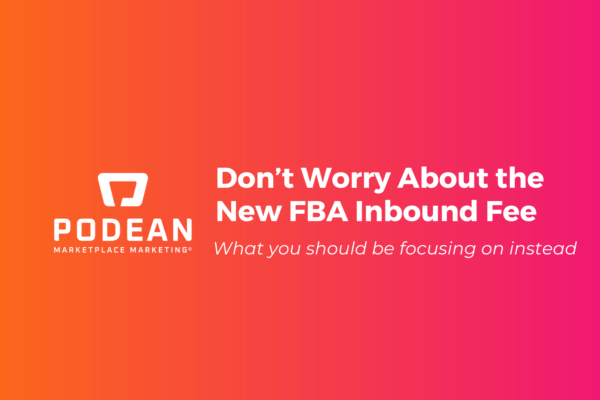
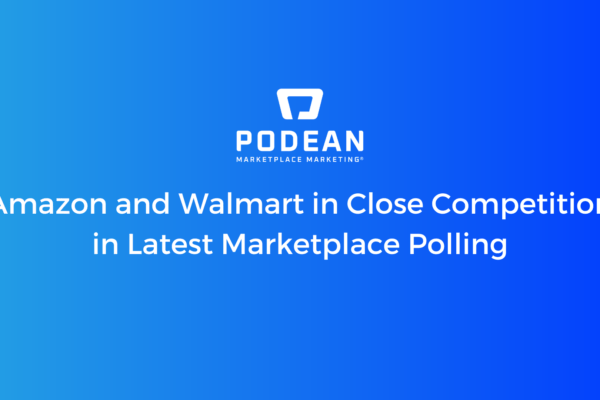
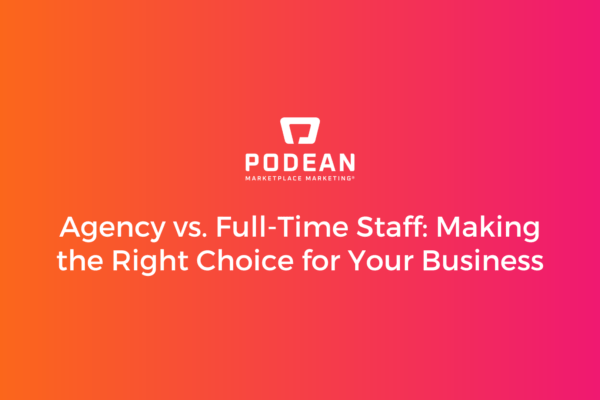
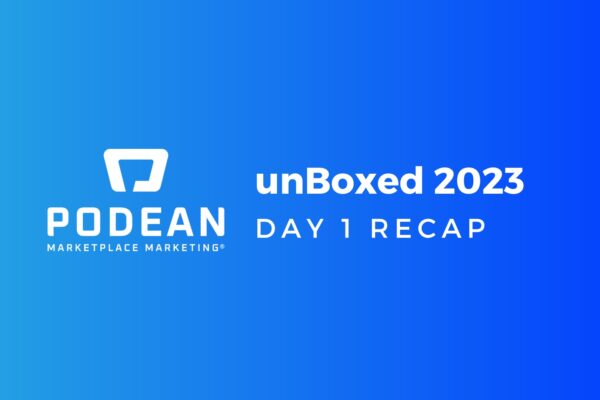




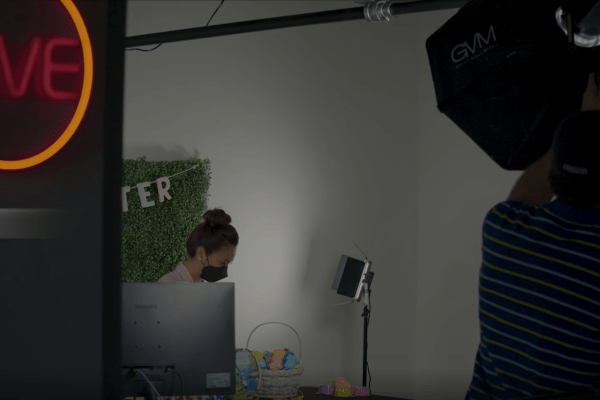
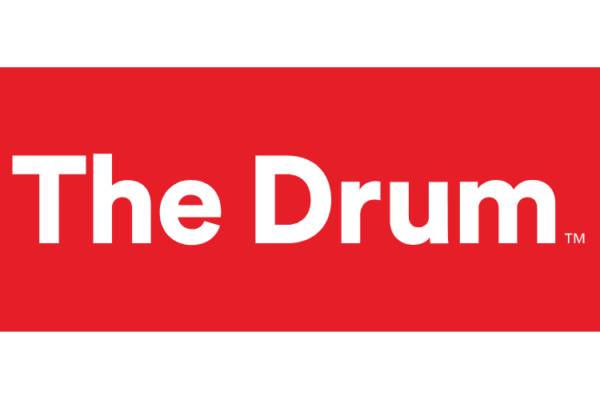
Comments are closed.